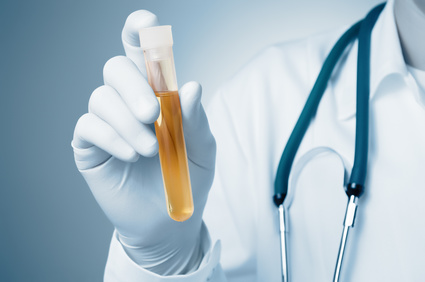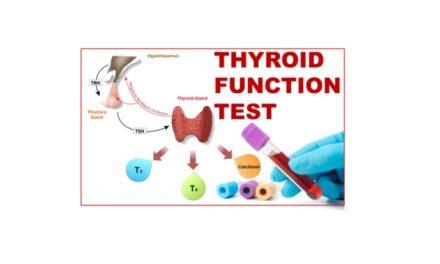1. What is synovial fluid?
Synovial fluid is the viscous fluid found in the synovial joints. It is also called as joint fluid. The word synovium is derived from Greek which means “with Egg” as the synovial fluid resembles that of egg white.
2. How is synovial fluid produced?
The synovial fluid is produced by the cells of the syovial membrane. Synovial fluid is an ultra filtrate of the plasma. It contains proteins derived from blood as well as from the secretions from synoviocytes.
3. What are the different types of synoviocytes?
There are two types of synoviocytes
a. Type A synoviocyte/Macrophage like: which are derived from monocytes/macrophages, they are primarily phagocytic in function. They remove the debris from the synovial fluid.
b. Type B cells/Fibroblast like: These are actually the proper synoviocytes which produces specialized matrix constituents including hyaluronan, collagens and fibronectin.
a. Type A synoviocyte/Macrophage like: which are derived from monocytes/macrophages, they are primarily phagocytic in function. They remove the debris from the synovial fluid.
b. Type B cells/Fibroblast like: These are actually the proper synoviocytes which produces specialized matrix constituents including hyaluronan, collagens and fibronectin.
4. What is the difference between synovial fluid and other body fluids??
The difference is in the content of Hyaluronic acid which is very high in the synovial fluid. The viscosity of the synovial fluid is due to the high content of hyaluronic acid.
5. What are the functions of synovial fluid?
The functions of synovial fluid are
a. Lubrication of joints
b. Nutrition to the articular tissue
c. As shock absorbers: which reduces the shock of compression of joints during walking or jogging.
a. Lubrication of joints
b. Nutrition to the articular tissue
c. As shock absorbers: which reduces the shock of compression of joints during walking or jogging.
6. How is the synovial fluid collected?
Synovial fluid is collected by a procedure called arthrocentesis. This is a needle aspiration of the affected joint.
7. What are the indications of arthrocentesis?
| Diagnostic | Therapeutic |
| Suspected arthritis | Relief of pain due to effusions of fluid or blood |
| Joint effusions | Drainage of collections in septic arthritis |
| Crystal arthropathy | Injecting medications |
| Monoarticular arthritis |
8. What are the different types of specimen containers in which the synovial fluid is collected?
The different specimen containers are
a. Heparinized tube: For cell counts
b. Plain tube : For chemical examination and immunological studies
c. Sterile containers: For microbiological examination.
a. Heparinized tube: For cell counts
b. Plain tube : For chemical examination and immunological studies
c. Sterile containers: For microbiological examination.
9. What are the components of synovial fluid analysis?
The components of synovial fluid examination are
a. Physical examination: Volume, Color , Clarity, Viscosity, Clotting and Mucin clot.
b. Chemical examination: Proteins, Glucose, Lactic acid, Lactate dehydrogenase and Uric acid.
c. Microscopic examination : Cell count, Cell type, Crystals and Microbiologic examination.
a. Physical examination: Volume, Color , Clarity, Viscosity, Clotting and Mucin clot.
b. Chemical examination: Proteins, Glucose, Lactic acid, Lactate dehydrogenase and Uric acid.
c. Microscopic examination : Cell count, Cell type, Crystals and Microbiologic examination.
10. What is the significance of color in synovial fluid analysis.?
Normally, the synovial fluid is colorless to pale yellow and clear. The following color changes are found in different conditions
| Deep yellow, clear | Non inflammatory effusions |
| Deep yellow and turbid | Inflammatory effusions |
| Milky/white | In the presence of crystals |
| Red, brown or xanthochromic | Presence of hemorrhage |
11.How do you assess the viscosity of synovial fluid and what is its significance?
The synovial fluid is expressed into the test tube from the tip of the syringe, one drop at a time. Normally the synovial fluid will form a string, approximately around 4-6 cm before it breaks.
Normally the synovial fluid is highly viscous. In noninflammatory conditions the viscosity will be reduced .In inflammatory, septic or crystal induced diseases the viscosity is absent.
Normally the synovial fluid is highly viscous. In noninflammatory conditions the viscosity will be reduced .In inflammatory, septic or crystal induced diseases the viscosity is absent.
12. What is mucin clot test.?
Mucin clot test is also known as Rope test. This is performed to estimate the integrity of mucin ie, hyaluronic acid-protein complex. One part of synovial fluid is mixed with four parts of 2% acetic acid. Normal synovial fluid forms a ropy clot which indicates good integrity of hyaluronate. If the ropy clot is very fragile and breaks up easily then it means that the integrity of mucin is poor.
13. How is mucin clot test interpreted?
The mucin clot test is interpreted as
Good (solid clot),
Fair (soft clot),
Low (friable clot), and
Poor (no clot).
Good (solid clot),
Fair (soft clot),
Low (friable clot), and
Poor (no clot).
14. What is the cause of clotting of Synovial fluid ?
Presence of fibrinogen results in the formation of clot. It is caused due to damage to synovial membrane or because of traumatic aspiration. The clot interferes with the microscopic examination.
15. What are the normal parameters of Synovial fluid analysis?
The normal synovial fluid parameters are as follows
| Physical examination | |
| Color and clarity | Colorless to pale yellow and clear |
| Viscosity | High |
| Mucin clot test | Good |
| Chemical examination | |
| Protein | 1–3 g/dL. |
| Glucose | less
than 10 mg/dL lower than serum levels |
| Uric acid | 6 to 8 mg/dL. |
| Lactic acid. | less than 25 mg/dL |
| Microscopic examination | |
| Cell count | Leukocytes 150 -200 cells/micro L |
| Cell type | Neutrophils 25% of the differential |
| Crystals | Absent |
| Microbiological examination | |
| Culture | Negative |
16. What are Ragocytes?
These are the neutrophils which have phagocytosed immune complexes like IgG, IgM, compliment and rheumatoid factor. The cytoplasmic granules appear dark. Ragocytes are found in Rheumatoid arthritis.
17. What are Reiter’s cells ?
There are actually the mononuclear cells/macrophages which have phagocytosed the neutrophils. These are found in Reiter syndrome.
18. What are the different types of abnormal Synovial fluid and what are their findings?
| Physical examination | Non inflammatory | Inflammatory | Septic | Hemorrhagic | Crystal induced effusion. |
| Color and clarity | Dark yellow, slightly cloudy | Dark yellow/whitish, cloudy to turbid | White/yellow or green
Turbid |
Red/brown or cloudy | Milky/cloudy/turbid |
| Viscosity | Reduced | Absent | Absent | Absent | Absent |
| Mucin clot test | Fair | Poor | Poor | Poor | Poor |
| Microscopic examination | |||||
| Cell count | 200- 2 000 WBCs | 2,000 to 50,000 | 50,000–200,000 WBCs | 50–10,000 | 500–200,000 |
| Cell type | Less than 30% neutrophils | Greater than 50% neutrophils | Greater than 17%% neutrophils | Less than 50% neutrophils
Plenty of red blood cells. |
Less than 17%% neutrophils |
| Crystals | Negative | Negative | Negative | Negative | Plenty
Gout: needle shaped Pseudogout : rhomboid. |
| Microscopic examination | |||||
| Culture | Negative | Negative | positive | Negative | Negative cc |
19.How should crystals be assessed in microscopic examination.?
The following parameters should be considered when one is looking for crystals in the Synovial fluid
a. Shape
b. Birefringence
c. Location (intra/extracellular)
d. Quantity (sparse/plenty
a. Shape
b. Birefringence
c. Location (intra/extracellular)
d. Quantity (sparse/plenty
20. What are the different types of crystals one can encounter in synovial fluid and in which conditions they are found ?
| Condition | Shape | Birefringence | Location | Quantity | |
| Monosodium urate crystals
(MSU) |
Gout | needle- shaped | Negative | Can be seen inside or outside the cells. | Plenty |
| Calcium pyrophosphate dehydrate
(CPPD) |
Pseudo gout | Short sticks , rectangles or small squares | Weak positive | Intra and extracellular | Plenty |
| Calcium hydroxyapatite | Symptomatic inflammation | Irregular or Chinese coin shape | Negative | extracellular | Few |
| Cholesterol | Rheumatoid . rarely osteoarthritis and gout | Large square with notch at one of the corner | Negative/positive | Extracellular | Few to plenty |
| Lipid | acute monoarthritis, chronic polyarthritis, and pigmented villonodular synovitis | Maltese cross | Positive | Extracellular | Few to plenty |
| Calcium oxalate | Renal damage and oxalosis | Square, pyramidal, short stick or oval | Strong positive | Extracellular | Plenty |
To know how you have understood the topic, take the QUIZ. CLICK HERE





